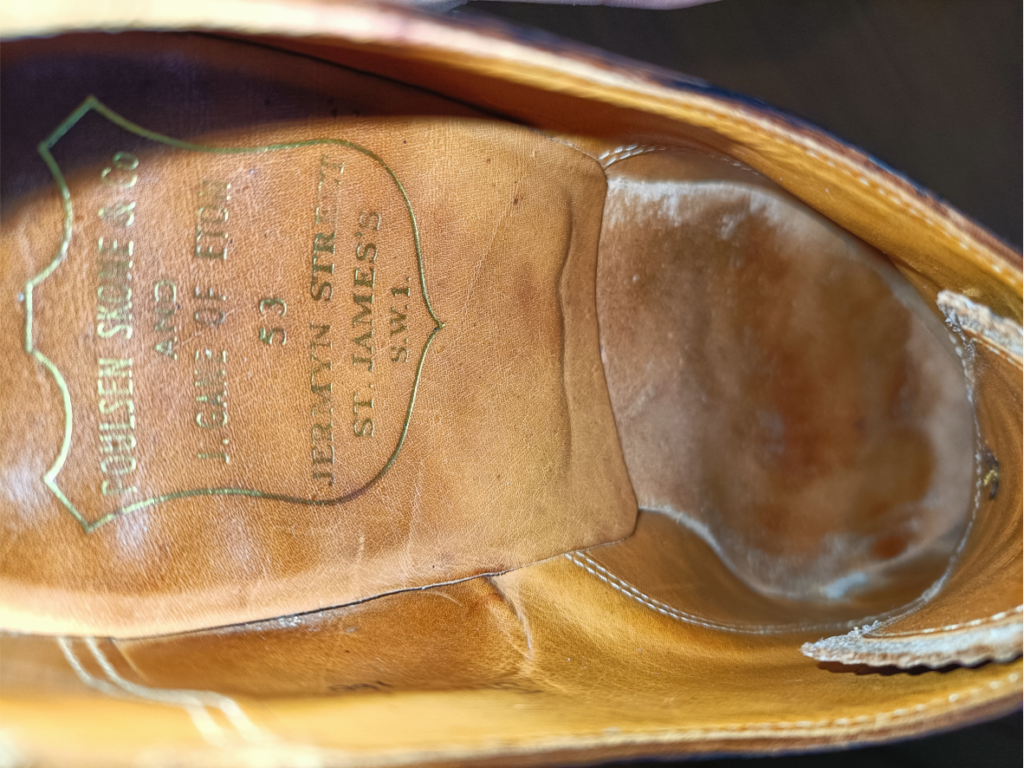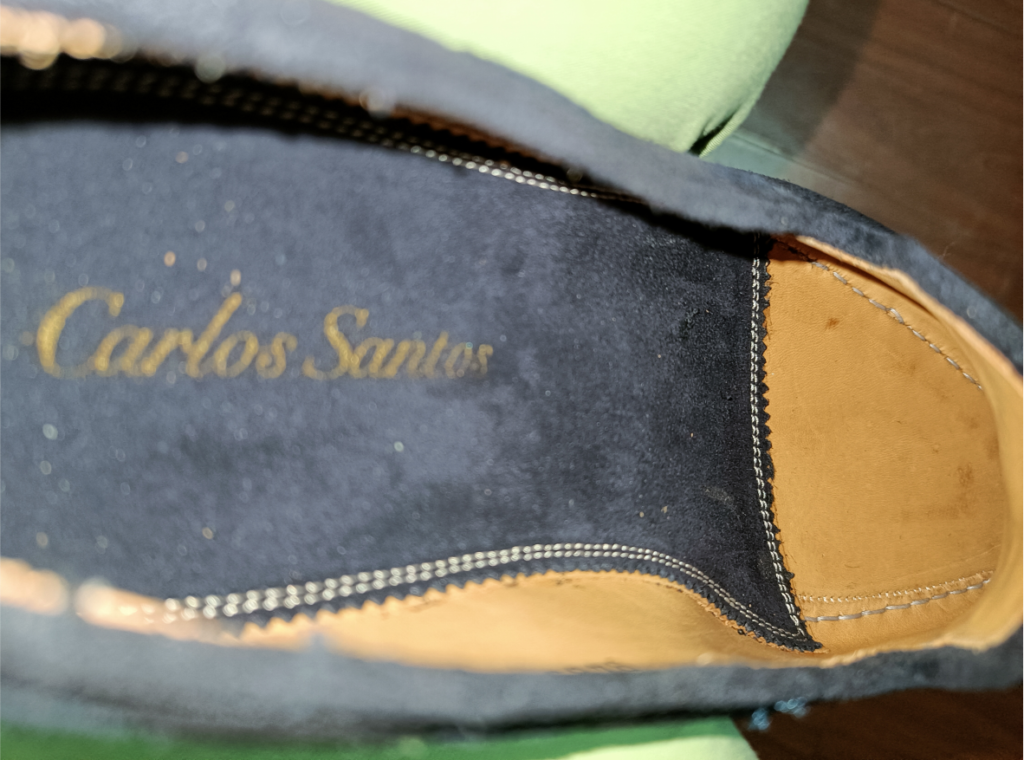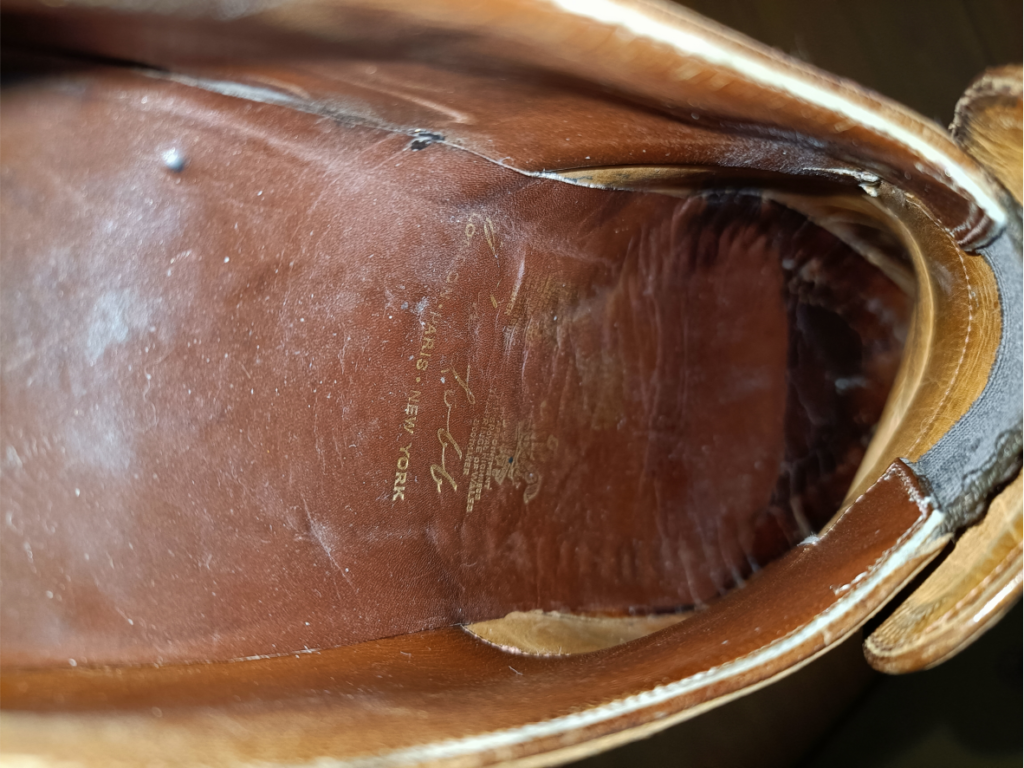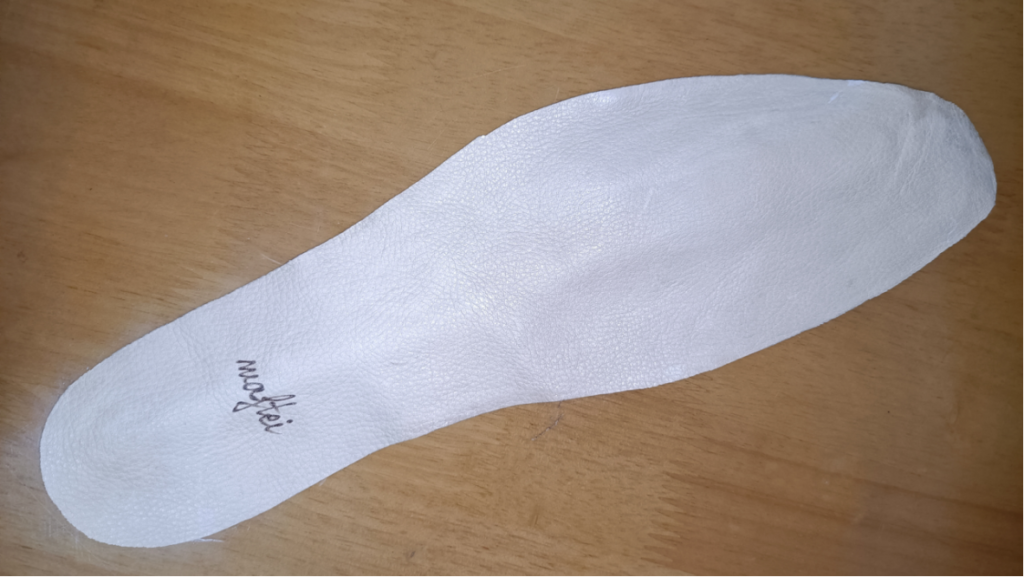I say insole, everyone knows what it is, if I say heel pad, probably many people are confused, what is it? Basically, your shoes (if they are high-end sewn shoes) must have them, but we basically don’t mention it.
The more precise name is sock lining, although the heel of this place is indeed in contact with the socks, but the whole shoe is in contact with the socks, why should this piece of leather be crowned with socks?
On the side we can see, it is a piece of leather, same to lining, and on the back, it is a sponge that makes our heel feel soft. But this is sponge is only used in Ready To Wear shoes, most bespoke shoes, that is, purely handmade, have no such thing under sock lining. Don’t handmade shoes care about comfort? I don’t have an answer either.
Anyway, it’s such a thing, so what are we going to look at today? The answer is length.
Let’s start with the default.

This pair of Poulsen Skone & Co were made by Crockett & Jones, and you can see that its length is roughly where the heel meets the arch of the foot. In the center there is a bulge, which is the sponge underneath that I mentioned.
This length can be said to be the example that British shoe brands send to the world, and 80% of ready to wear shoes on the market are following suit.
Next, let’s look at a less satisfactory answer.

The heel pad of Beijing shoe brand Twinkima.G is obviously much longer, ending at the junction of the arch of the foot and the forefoot.
Let’s start by asking a question, why is it so long? Because in order to achieve a blind waist, Kitamachi chose the process of forefoot Goodyear and waist Blake. In the middle section of midsole, there will be stitches. In order to cover this stitch, a longer leather was used.
What’s wrong with the execution? You can see that the corners of the front end are curled, cocked, and blackened, why is this? Because when the foot comes out, the forefoot, which is the thickest place, will scrape the edge of this leather, and this leather is only glued to the midsole, so it is easily pulled apart.
As you can imagine, the situation is only going to get worse.
My solution is to cut the upturned ones with scissors. That stitch wasn’t a problem for me.
Of course, we can’t just see the bad aspects, this sock lining is exquisite, everyone can see that its edges are decorated with serrations.
Is there a way to solve that problem?

I see a very good solution in Carlos Santos’ shoes. When I first saw sock lining on Carlos Santos, I noticed two parallel stitches on the edges, which I thought were decorative stitching, and I thought it was really good-looking.
Because the construction of this one is Bolongese (a variant of Blake), the same long leather as Twinkima.G is used to cover the stitches. After I wore it, I noticed that this stitch is not purely decorative, but really sewn on the midsole, so it will not be pulled open and curled.
This made me feel very fond of Carlos Santos. Because of the attention in these subtleties shows that it is a manufacturer with experience and control of product quality.
In addition, the suede sock lining is also very unique.
Finally, what else kind of sock lining? The answer is leather. What nonsense am I talking about?

On bespoke shoes, it is a more common way, such as this pair of John Lobb St. James.
One explanation is that handwelting causes a crochet to be indented on the midsole, and this leather is used to cover it, similar to the stitches that cover Blake stitches.
Is there a need to cover it, I don’t have an answer, maybe conventional solution is like this.

Maftei also only has this sock lining, a thin layer of skin, there is no cushioning layer underneath.
Summary
It’s like saying that Goodyear construction has more than 200 steps, this can be said to be a nonsense. You ask any professional shoemaker to list 100 steps, and he may not be able to say. But at the same time, you can really break it down into many, many steps, and each step can be delved into.


